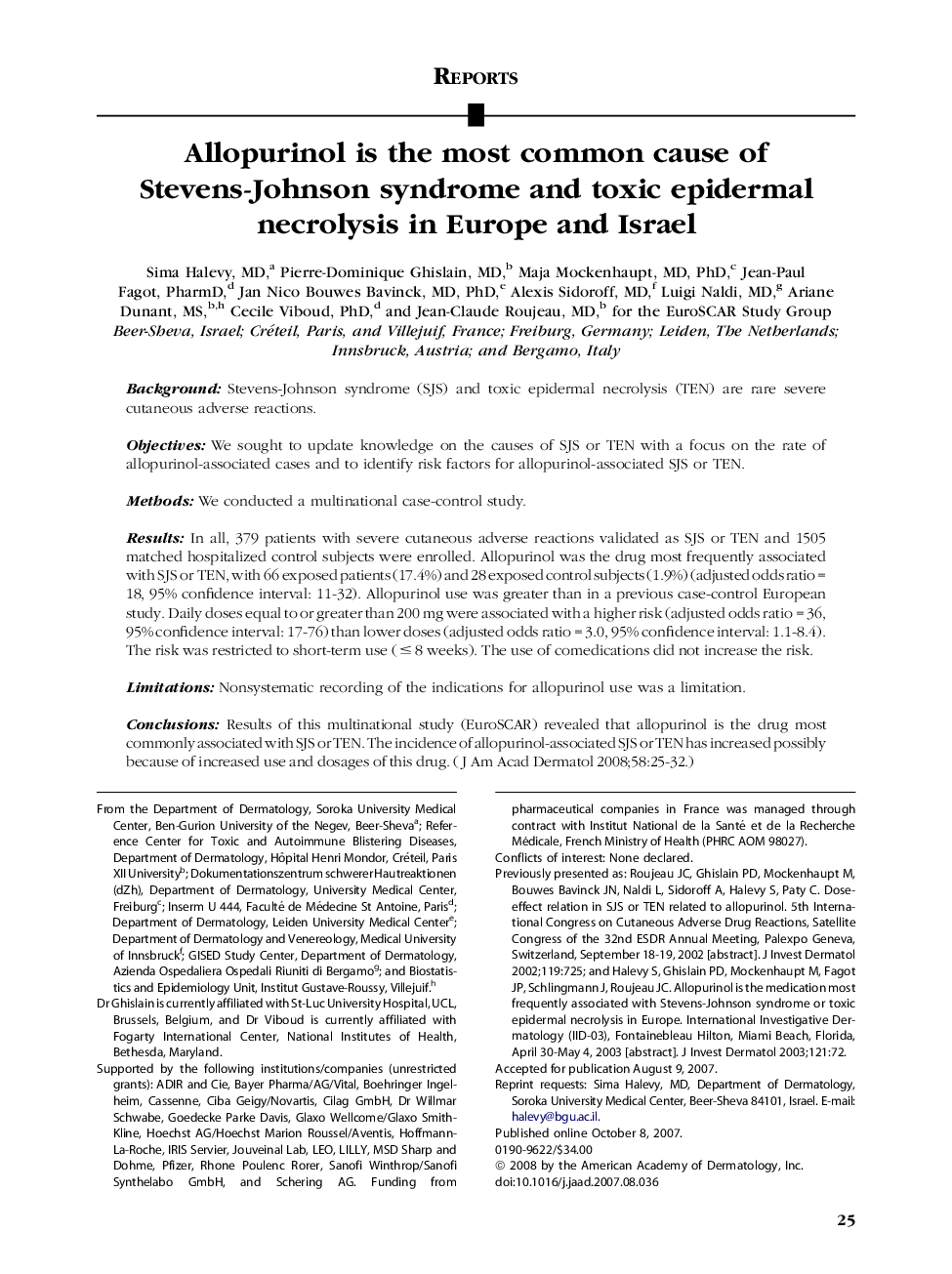| Article ID | Journal | Published Year | Pages | File Type |
|---|---|---|---|---|
| 3210536 | Journal of the American Academy of Dermatology | 2008 | 8 Pages |
BackgroundStevens-Johnson syndrome (SJS) and toxic epidermal necrolysis (TEN) are rare severe cutaneous adverse reactions.ObjectivesWe sought to update knowledge on the causes of SJS or TEN with a focus on the rate of allopurinol-associated cases and to identify risk factors for allopurinol-associated SJS or TEN.MethodsWe conducted a multinational case-control study.ResultsIn all, 379 patients with severe cutaneous adverse reactions validated as SJS or TEN and 1505 matched hospitalized control subjects were enrolled. Allopurinol was the drug most frequently associated with SJS or TEN, with 66 exposed patients (17.4%) and 28 exposed control subjects (1.9%) (adjusted odds ratio = 18, 95% confidence interval: 11-32). Allopurinol use was greater than in a previous case-control European study. Daily doses equal to or greater than 200 mg were associated with a higher risk (adjusted odds ratio = 36, 95% confidence interval: 17-76) than lower doses (adjusted odds ratio = 3.0, 95% confidence interval: 1.1-8.4). The risk was restricted to short-term use (≤8 weeks). The use of comedications did not increase the risk.LimitationsNonsystematic recording of the indications for allopurinol use was a limitation.ConclusionsResults of this multinational study (EuroSCAR) revealed that allopurinol is the drug most commonly associated with SJS or TEN. The incidence of allopurinol-associated SJS or TEN has increased possibly because of increased use and dosages of this drug.
